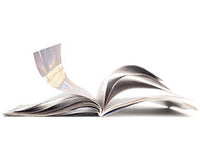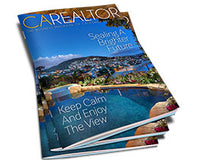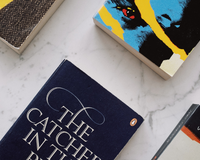Paper selection and finish are the most crucial decision-making moments in a spiral-bound. Quality can vary between finely crafted, strong, and functional. However, just how do you go about choosing the perfect combination amidst hundreds of options? Read through these crucial tips on which to consider.

1. Purpose
First things first: Determine what your purpose for the booklet is. Is it a marketing brochure, a product catalog, or a company manual? This will dictate what type of you want to use.
For marketing materials, images and colors pop when glossy or matte finishes are used. Informational, like manuals or reports, would require something more durable, and less reflective to read well. One may need a stronger product for an educational or training program that would be subject to frequent handling.
2. Suitable Paper Weight
Weight is one of the most essential features that give the overall feel and look of a booklet. It usually comes measured in pounds or grams per square meter. Some of the most commonly used are:
-
Standard Text (20lb or 80gsm): The best type for a multi-page. Such projects that do not require too much handling will go very well with this one. Examples of such projects are newsletters or brochures.
-
Cover Stock (80lb or 220gsm): If you want a more sturdy cover, then the use of cover stock would be just perfect. This would make look very professional and sturdy.
-
Heavyweight (100lb or 270gsm and higher): These heavier can be very useful if you want to have an ultimate, high-end. Catalogs and portfolios look amazing and solid because of these.
The right weight for the job will ensure lasts and feels nice to handle.
3. Decide the Finish
The finish is the texture or appearance the surface gives out. Finish may influence both how a surface looks and feels as well as the way it performs when performance in durability and usability terms is in question. Many kinds of finishes exist. These include but are not limited to:
-
Gloss Finish
A gloss finish will give the a shiny, reflective surface. It is most preferably used for those containing vibrant images and full-color designs, such as product catalogs or event brochures. It gives colors the ability to appear bright and crisp.
-
Matte Finish
A matte finish has the appearance of being dull, not reflecting any kind of light. Many times, it's used for business reports, educational, or information sheets when it has to be read. The matte feels more luxurious and doesn't smudge as easily or produce fingerprints, so use this with work that will be used a lot.
Here is the link briefly explaining the difference between glossy and matte finishing.
https://printstarbooklets.com/blogs/print-101-basics/whats-the-difference-between-glossy-and-matte-finishing
-
Silk Finish
A silk finish is halfway between gloss and matte; it has a smooth feel and does not have the highly shiny appearance of gloss. So it feels very plush to the touch. Silk finishes are best for brochures for that high-end look you want without the reflective glare one gets with glossy.
-
Uncoated Finish
It has a more natural, rough texture and feels more organic and tactile. This finish is usually used for eco-friendly or minimalist designs. It's great for text-heavy and those where a more rustic or natural look is desired.
4. Consider Durability
Another concern when choosing for your spiral bound book is durability. Will the book get handled a lot, or is it a relatively stationary product? If you expect to have the book get a lot of use, like a manual or catalog, you may want to consider using thicker with a protective finish.
Matte finish thick provides durability without giving up readability. Waterproof coatings will protect from spilled and stained, for example, in the workshops and the kitchenettes.
5. Match Paper to Your Branding
You will also want to make sure you choose to align with your brand image. So if your company or product is about high-end quality, you may want to use premium and a silk or gloss finish to reflect that. If your brand is based on sustainability, eco-friendly, uncoated would be a strong statement.
An upscale brand may need a high-gloss finish applied on thick, high-grade to convey premium-ness. An eco-friendly company could consider recycling with an uncoated or matte finish that would reflect the company's concerns for the environment.
6. Color options
The color you choose can make all the difference in the overall look. The most common is standard white, but other colors can add uniqueness to your project.
-
White: This is the standard and offers the best contrast for readability, especially for text-heavy booklets.
-
Off-White or Cream: Generally preferred by many to give it the olden or vintage effect, it can also diminish the occurrence of glare, thereby reading smoothly.
-
Colored: Although less popular than its whiter and off-white counterpart, colored can certainly grab the attention of many with distinct highlights of certain parts.
Final Words
Finish is essential when you need the appearance and functionality to meet what you want. It will logically flow if you consider purpose, weight, finish, durability, and branding to make an informed choice about enhancing the impact. Be sure to request a sample should you be unsure about how your options would work for you. Know more. To view some and complete finishes, go to printstarbooklets.com.





